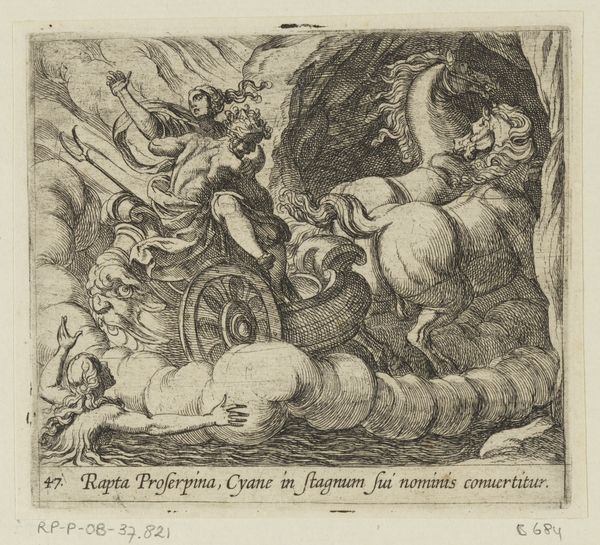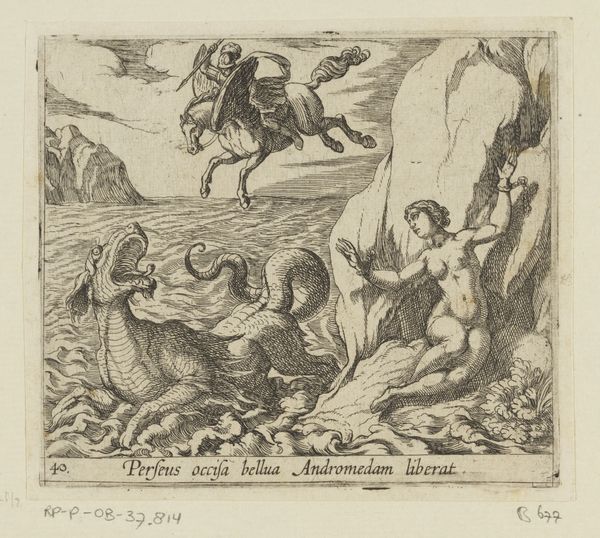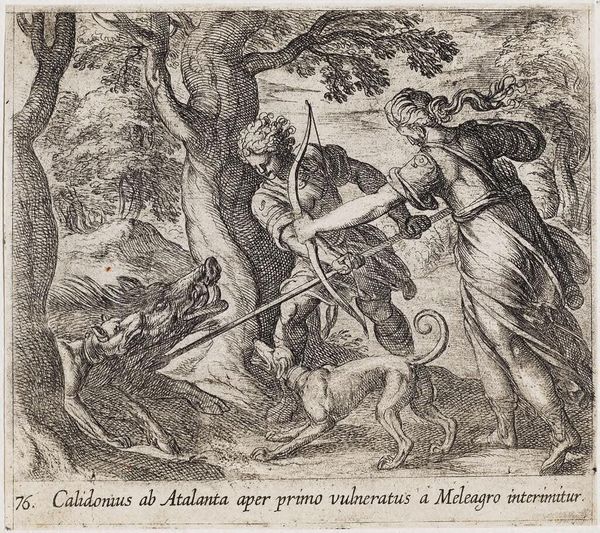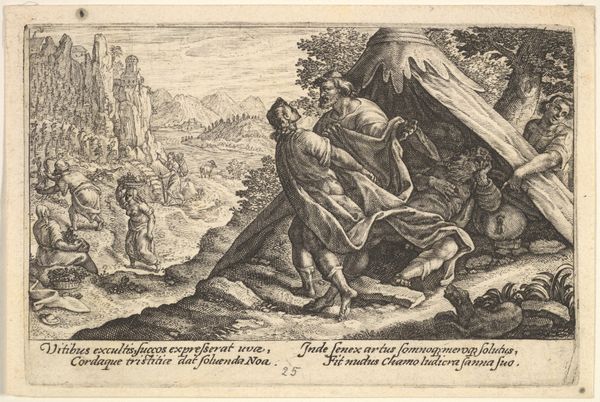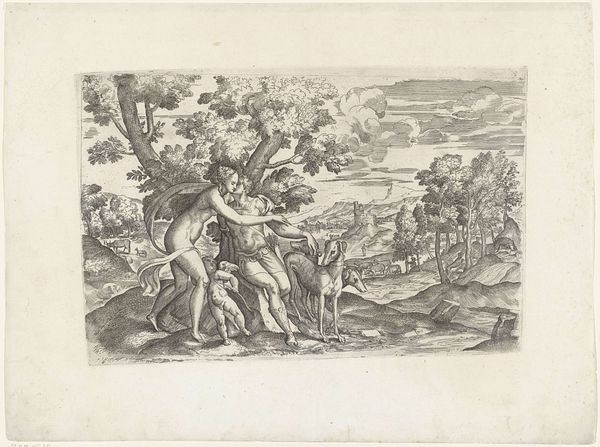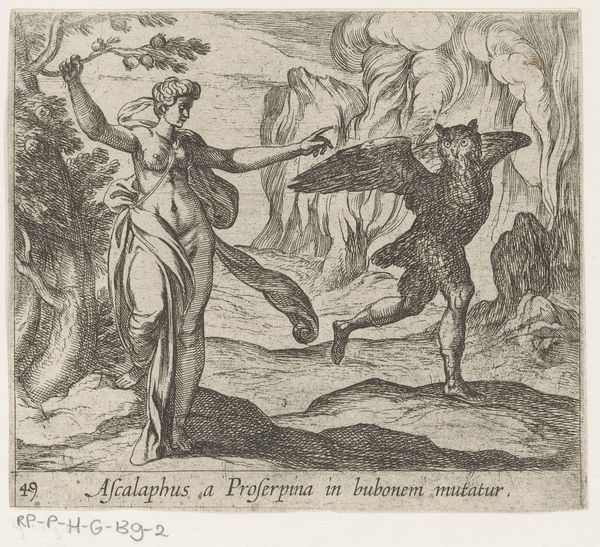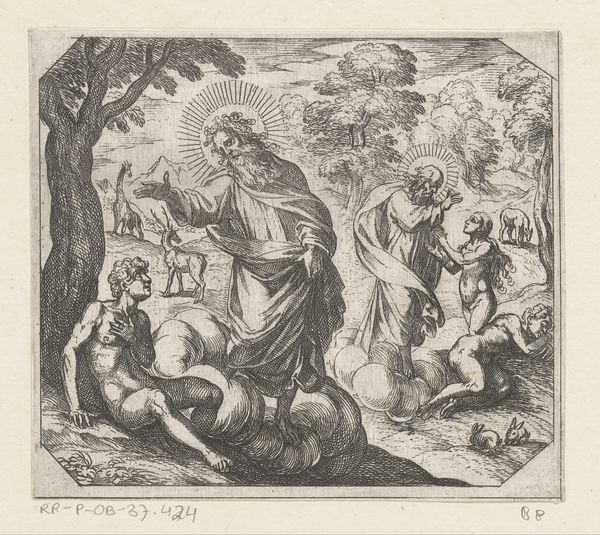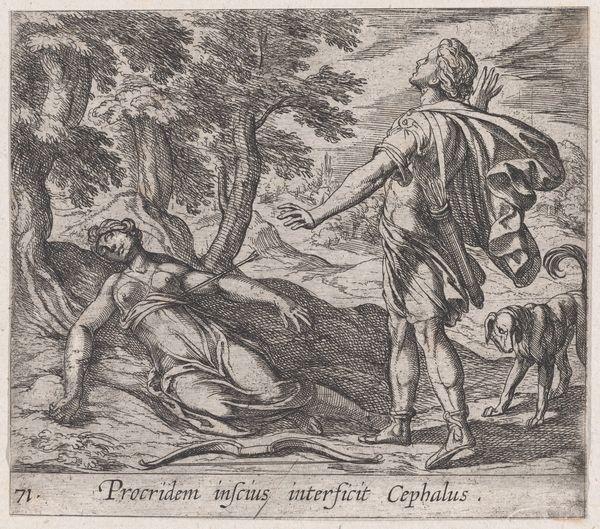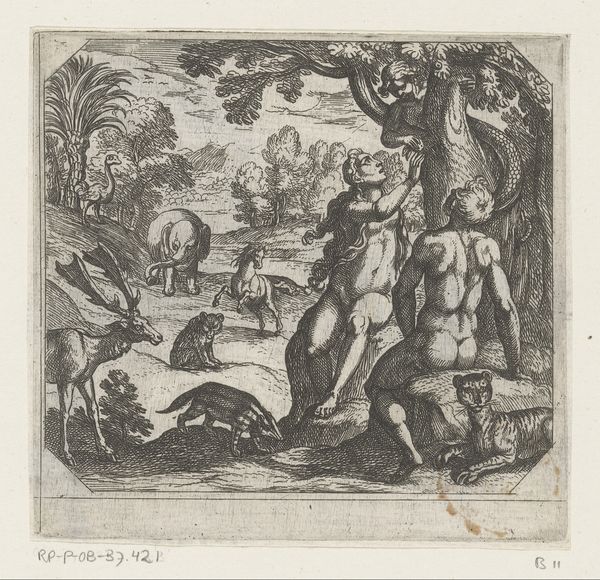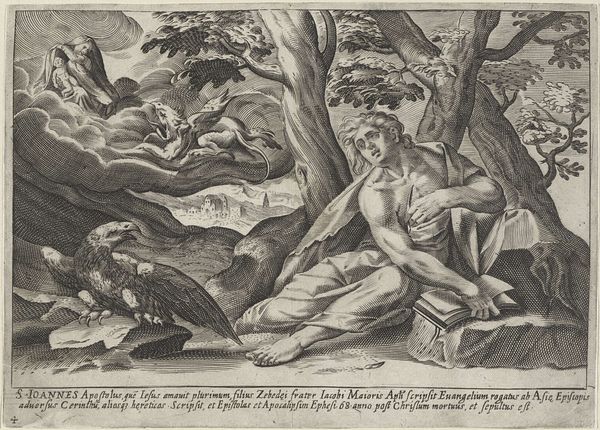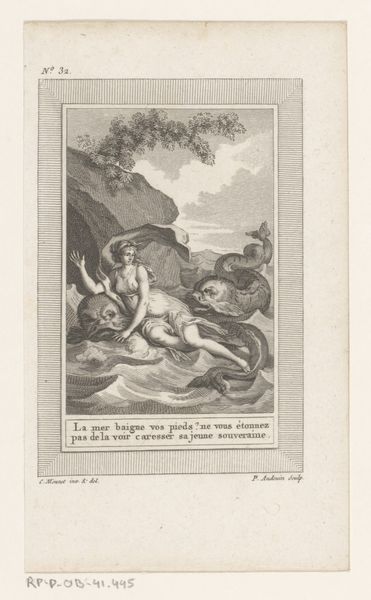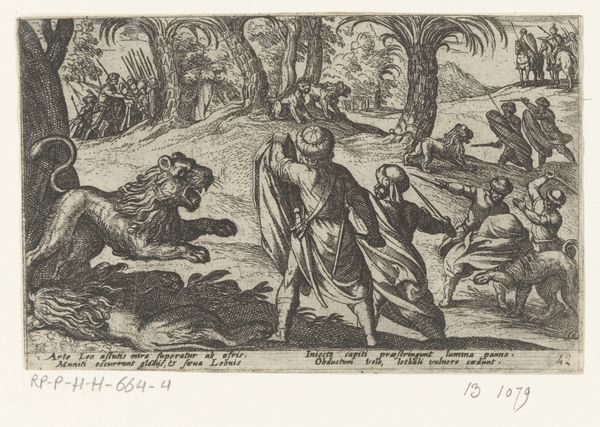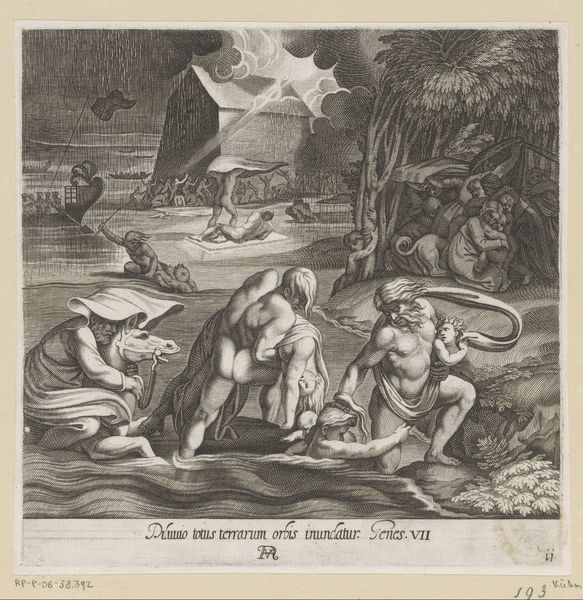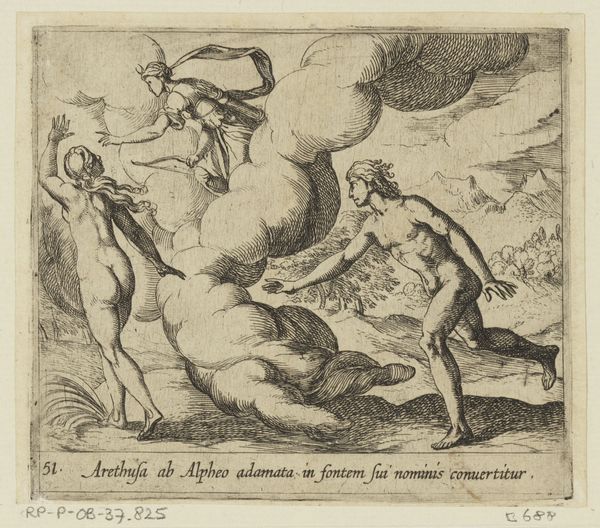
engraving
#
baroque
#
old engraving style
#
landscape
#
figuration
#
history-painting
#
italian-renaissance
#
engraving
Dimensions: height 104 mm, width 117 mm
Copyright: Rijks Museum: Open Domain
Antonio Tempesta created this print, Atalanta en Meleager doden het zwijn, presumably in Italy, sometime between 1575 and 1630. It depicts a scene from classical mythology. The image is striking because it features a woman, Atalanta, as a powerful protagonist. In sixteenth-century Europe, images like this challenged the accepted social order, where women were largely excluded from positions of power and agency. Here, Atalanta actively participates in the hunt, demonstrating her skill and strength. Tempesta worked at a time when printmaking was becoming increasingly important as a means of disseminating ideas. Prints were relatively cheap to produce and easy to distribute. This print would have circulated among a wide audience, potentially sparking conversations about gender roles and female empowerment. Art historians use prints and other historical documents to understand the complex social dynamics of the past. By exploring these resources, we can gain a deeper appreciation of the cultural work that this image performed.
Comments
No comments
Be the first to comment and join the conversation on the ultimate creative platform.
